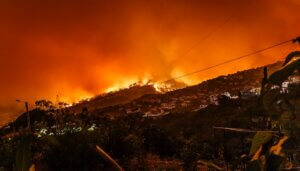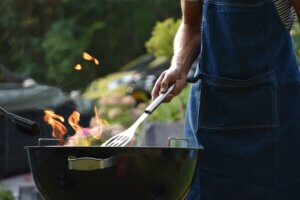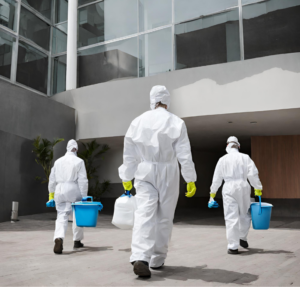Fire Restoration Cleaning: Seasonal Trends to be aware of
Fire Restoration Cleaning: Seasonal Trends to be aware of
Summary
Understanding seasonal trends in fire incidents is crucial for prevention, preparedness, and effective fire restoration cleaning. The article provides data-driven insights and recommendations for different seasons, emphasising the importance of knowing both when and what types of fires are likely to occur. It also highlights the vital role of professional fire restoration in ensuring both the structural integrity of a building and the health and safety of its occupants.
Understanding the seasonal fluctuations in fire incidents is paramount for prevention, preparedness, and fire restoration cleaning. This article delves deep into the data-driven insights, regional variations, and actionable recommendations to safeguard your property and lives from fire-related tragedies.
Why Seasonal Variations in Fire Incidents Matter
The significance of recognising patterns in fire occurrences can never be overstated. Awareness of these patterns can guide preventive measures, optimise resource allocation, and influence the severity of unavoidable fire restoration cleaning. It’s not just about understanding when fires are likely to occur, but also discerning the kinds of fires prevalent in particular seasons.
Winter: The Peak of Residential Fires
Winter months pose a unique challenge. An increase in heating-related fires is observed due to using space heaters, fireplaces, and furnaces. The National Fire Protection Association (NFPA) states that heating equipment is the leading cause of home fires during winter.
Key Recommendations for Winter:
- Regular inspection and cleaning of heating equipment
- Keeping combustibles at least three feet away from heat sources
- Using portable heaters with an auto shut-off function.
Summer: Wildfires and Grill-Related Incidents
Contrary to the cozy fires of winter, summer sees an uptick in bushfires and outdoor BBQ incidents. As a popular Australian pastime, BBQ accidents and related fires increase with the dangers of bushfires a constant worry in regional areas.
Key Recommendations for Summer:
- Adhering to local fire bans and restrictions
- Safe disposal of cigarettes and matches
- Keeping a water source close by when barbecuing
Spring: Transition Seasons
Spring continues the risk of bushfires due to dry vegetation left over from winter.
Key Recommendations for Transition Seasons:
- Practicing safe burning of yard waste
- Never leave cooking unattended
- Installing a sprinkler system to mitigate fire risks.
Regional Variations in Seasonal Fire Incidents
Climate plays a significant role in determining the types of fires experienced. Coastal areas may see fewer bushfires but higher instances of electrical fires. Understanding the geography-specific trends is vital for localised prevention strategies.
Fire Restoration Cleaning
Fire restoration cleaning is an essential step in recovering from a fire incident, not just to salvage what remains of your property, but also to ensure the safety and well-being of its occupants. Here’s why fire restoration cleaning is crucial:
Health and Safety Concerns
Fires can leave behind hazardous residues, including soot, ash, and potentially harmful chemicals from burnt materials. These residues can pose significant health risks when inhaled or come into contact with skin. A professional fire restoration cleaning removes these risks, making the space safe for occupation again.
Structural Integrity
The impact of fire can weaken building structures, making them unsafe. Fire restoration cleaning is not just about cleaning; it’s also about assessing structural elements like walls, floors, and ceilings to see if they are in good condition or require repairs.
Odour Elimination
The smell of smoke can linger long after the fire has been put out, embedding itself into walls, upholstery, and other porous materials. This odour is not just unpleasant; it can be a constant reminder of the traumatic event. Proper fire restoration cleaning techniques are needed to completely remove the smell.
Salvaging Valuables
Fire restoration cleaning can help in salvaging items that might appear to be lost. Professionals use specialised techniques to restore various types of materials, thereby saving you the cost of replacement.
Understanding the seasonal trends in fire incidents is not just an academic exercise. It’s a crucial aspect of proactive safety measures that can save property and prevent fire restoration cleaning. By staying informed and taking timely action, we can all contribute to a safer environment, irrespective of the season.
FAQs
What is fire restoration cleaning?
Fire restoration cleaning is the process of restoring a property back to its pre-fire condition. This involves multiple steps such as assessing the extent of damage, removing soot and debris, deodorising, sanitising, and repairing or replacing damaged structures and items.
How soon should fire restoration cleaning begin?
Time is of the essence when it comes to fire restoration cleaning. Ideally, the process should begin within 24 to 48 hours after the fire has been extinguished. This helps minimise secondary damage like mould growth and corrosion.
Is DIY fire restoration cleaning advisable?
DIY fire restoration cleaning is generally not recommended. The process requires specialised equipment and expertise to properly assess and restore the property. It’s advisable to hire certified professionals to ensure that the restoration is done safely and effectively.
Why Choose AllAces?
Trust the experts with more than 35 years of industry experience, servicing both domestic and commercial clients. Our IICRC-certified technicians can ensure the best results possible when it comes to fire restoration cleaning and the return of a pre-loss condition.



